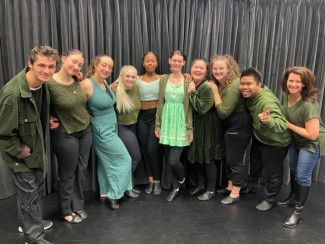Acting Students Learn Movement Techniques
- Image

Ambrose Arts is proud to be home to a 2 year Diploma in Acting as part of our program. In Fall 2023, our acting students participated in a Movement course taught by one of our outstanding sessional faculty, Sheahan Keinick. Students in the Movement course shared a final ensemble piece in the Ambrose Atrium on December 1 and that made us wonder, what do acting students need to learn about movement? Sheahan was happy to answer some questions to give us a better understanding of the important of movement to acting.
What is Movement class all about?/ How does it relate to acting?
Sheahan: To create a unique character, we must understand our own physical habits and personal choices, then find ‘neutral’. From there, we can consciously build a character’s physical performance. We spend a lot of time at first getting to know ourselves, increasing awareness, learning about our daily habits, and exploring the historical biographies of our bodies.
What skills are you teaching in Movement I?
Sheahan: Movement incorporates much more than one may initially assume. Not only do we increase awareness of alignment and improve our physical condition, we constantly reflect and investigate what we choose, whether consciously or unconsciously, and explore new ways of moving our bodies. In order to show up and be our best selves, we need to understand how to take care of our physical instrument the way a musician would take care of their musical instrument. We build physical awareness, strength, and stamina by starting each class with a 30 minute work out routine. Class incorporates self-care tools such as stretching, release, self-massage, breath awareness, and meditation. We learn how to warm up and cool down to prepare for a performance and keep ourselves in top form. A guest comes in to share their expertise in nutrition, specifically for students and performers on a budget who experience long project hours. The artists are guided in ways to create meaningful phrases of movement choreography by exploring tools related to Laban, Bartineff, Dowd, Zaporah, and even Alexander Techniques. Our semester culminates in a showcase of refined solo works and the outcome of a collaborative process to create an ensemble piece.
How does the performance capture those?
Sheahan: The performance of the Ensemble piece in the Atrium of the main building showcases selections of the artists solo works, linked together with tools such a canon, pattern, dynamics, and props. The students actually choose the music, costumes, the section of their solos to share and teach their colleagues, and together create the piece that is performed. A true representation of their artistic growth and teamwork.
What do you enjoy most about teaching Movement?
Sheahan: I love my job as a dance and movement educator. Helping students grow in awareness and to understand that their body is much more than something to carry their head around from place to place, is rewarding. To witness increased awareness on multiple levels, improved strength, artistic expressions come to life in choreographies, and most importantly, belief in their own physical capabilities, is incredibly fulfilling. By sharing my knowledge about the body and how it moves, I hope to empower the students with tools for life and selfcare outside the studio.
Sheahan points us to a quote that is applicable to everyone – not just dance and acting students. Jazz dance legend “Luigi” Faccuito survived a horrific accident in the 1940s and created a Jazz dance syllabus using his own accident recovery exercise routine. His recovery was guided by the drive to “Never Stop Moving,” which are the words of wisdom Sheahan continues to share with her students.
Never stop moving.
“Luigi” Faccuito
Thank you Sheahan for sharing your insight into the world of movement. For more information about our acting diploma, dance minor, or Ambrose degrees, visit Ambrose.edu/arts or email enrolment@ambrose.edu
